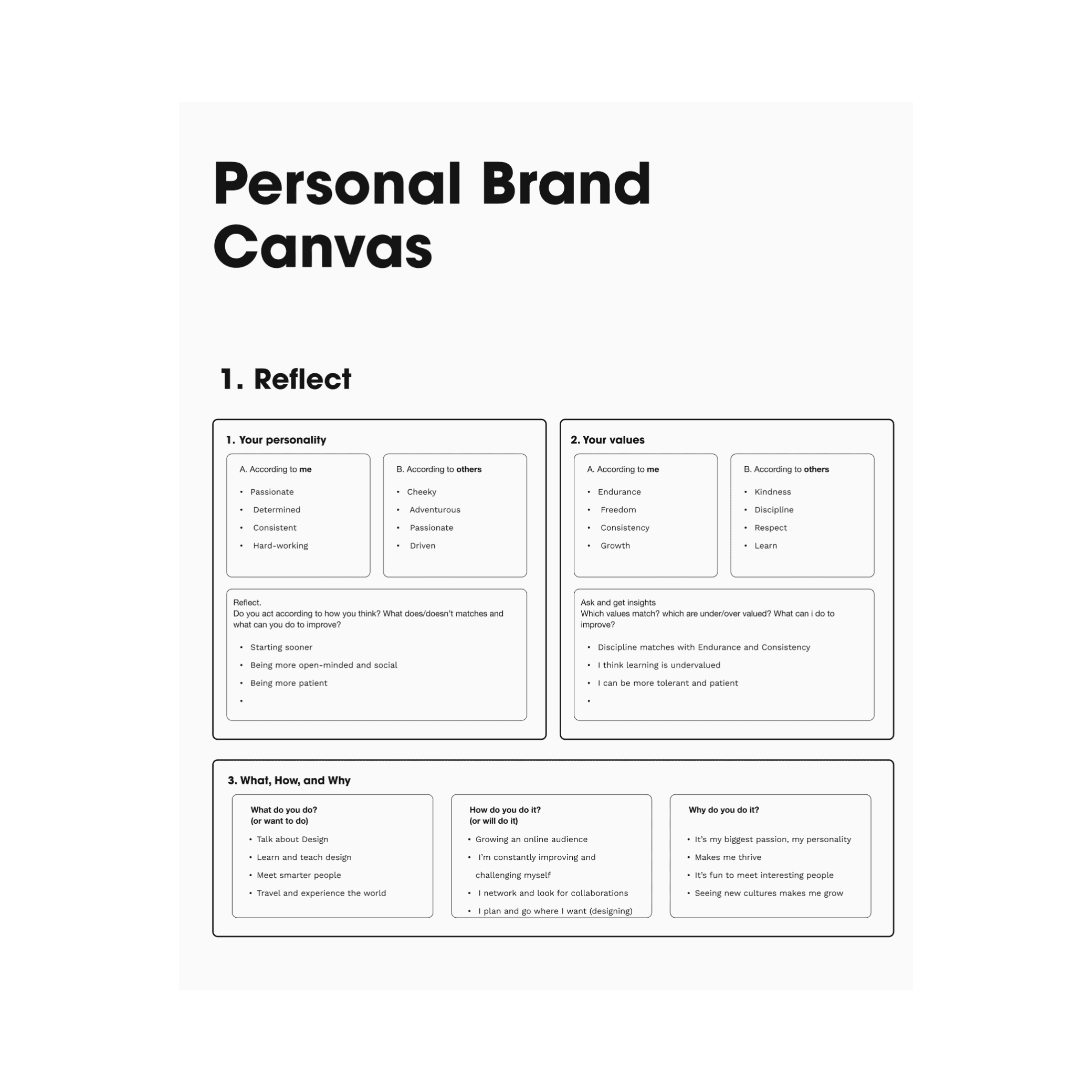Published
16 September, 2024
by
Kaleb Cardenas
Veed.io: When Flashy Features Overshadow Fundamental UX Principles
Veed.io is an online video editing platform that has gained popularity for its array of AI-powered features and user-friendly interface. The tool offers capabilities like AI avatar creation, text-to-video conversion, voice translation, background noise removal, and eye contact maintenance. While these features are undoubtedly impressive and easy to use, my recent experience with the platform revealed some significant underlying issues that highlight the importance of prioritising core user experience principles over flashy add-ons.

The Incident: A Costly Mistake
During three weeks, I diligently recorded over 40 videos for a course I was developing using Veed.io. One fateful day, while attempting to delete an unnecessary folder, I inadvertently deleted the entire folder containing all my crucial video content. This mistake, though initiated by my own action, was facilitated by a critical flaw in the platform’s user interface design.
The Root of the Problem
The issue stems from the placement of two drastically different options — “Move to Team Trash” and “Delete Permanently” — right next to each other in the user interface. This design choice violates basic UX principles by failing to prevent user errors and not accounting for unconscious slips.
Beyond Surface-Level Issues
While the deletion incident was alarming, it revealed deeper problems within Veed.io’s overall user experience:
Navigation, Hierarchy, and Layout: The platform’s design lacks consideration of these fundamental principles, making it challenging for users to efficiently manage their content.
Error Prevention: The ease with which catastrophic mistakes can occur indicates a lack of safeguards and confirmation steps for critical actions.
Customer Support: The inability to recover deleted files, coupled with the admission that this is a recurring issue, points to significant shortcomings in the platform’s data management and customer service capabilities.
The Consequences
The repercussions of this experience were severe. The loss of 40 videos not only meant hours of wasted work but also resulted in missed deadlines and significant project delays. This incident underscores how seemingly minor UX oversights can have major real-world consequences for users.
The Blockbuster Blunder: A Cautionary Tale
The contrasting fates of Blockbuster and Netflix further illustrate the importance of prioritising user experience and adapting to changing customer needs. Blockbuster’s downfall serves as a stark reminder of what can happen when a company fails to listen to its customers and adapt to evolving technologies.
In the early 2000s, Blockbuster peaked with over 9,000 stores worldwide. However, the company made several critical mistakes:
Ignoring changing customer behaviour: Blockbuster failed to recognise the growing demand for convenience and flexibility in movie rentals. Customers were increasingly frustrated with late fees and the need to physically visit stores.
Dismissing digital innovation: In 2000, Netflix approached Blockbuster with an offer to sell their company for $50 million. Blockbuster’s CEO at the time, John Antioco, dismissed the offer, failing to see the potential of the online rental model.
Slow adaptation: When Blockbuster finally attempted to enter the online rental market, it was too late. Their efforts were half-hearted and failed to match Netflix’s user experience and convenience.
Netflix’s Rise: Embracing UX and Customer-Centric Design
In stark contrast, Netflix’s success can be attributed to its focus on user experience and responsiveness to customer needs:
Eliminating pain points: Netflix addressed major customer frustrations by removing late fees and offering a subscription-based model for unlimited rentals.
Continuous innovation: Netflix consistently evolved its service, transitioning from DVD-by-mail to streaming, and later to producing original content. Each step was driven by customer preferences and technological advancements.
Data-driven UX improvements: Netflix leverages user data to personalise recommendations, improve its interface, and even inform content creation decisions. This focus on UX has led to high user engagement and retention.
Accessibility across devices: Netflix ensured its service was available on multiple platforms, from smart TVs to mobile devices, catering to users’ desire for on-the-go entertainment.
The result of these strategies is clear: while Blockbuster filed for bankruptcy in 2010, Netflix has grown into a global streaming giant with over 230 million subscribers worldwide as of 2023.
A Call for Improvement
As a UX designer and a user who genuinely appreciates Veed.io’s potential, I offer the following recommendations to the Veed.io team:
Prioritise Heuristics: Implement design patterns that prevent unconscious slips and protect users from irreversible actions.
Revisit Fundamental Design Principles: Focus on creating an exceptional UI that adheres to core UX best practices.
Enhance Navigation and File Management: Improve the overall structure and organisation of the platform to make content management more intuitive.
Elevate Customer Support: Develop robust systems for data recovery and prioritise solving user issues, even if they seem isolated.
Looking Forward
Despite this setback, I believe in Veed.io’s potential. The platform’s innovative features demonstrate a commitment to pushing the boundaries of online video editing. However, without a solid foundation of user-centric design and reliable core functionality, these advanced features risk becoming mere “lipstick on a pig.”
To the Veed.io team, I extend an invitation to collaborate on improving the overall user experience. By combining your innovative spirit with a renewed focus on UX fundamentals, Veed.io can truly become a leader in the online video editing space. There’s a huge opportunity to create a platform that not only dazzles with its features but also provides a seamless, reliable, and user-friendly experience from start to finish.
Conclusion
The Blockbuster-Netflix case study serves as a powerful reminder that in today’s fast-paced digital landscape, companies must prioritise user experience and remain adaptable to changing customer needs. By learning from both the mistakes of Blockbuster and the successes of Netflix, Veed.io can position itself for long-term success and avoid becoming another cautionary tale in the annals of tech history.
Thanks, Veed team for reading this article. I hope it helps.
Published
16 September, 2024
by
Kaleb Cardenas
Veed.io: When Flashy Features Overshadow Fundamental UX Principles
Veed.io is an online video editing platform that has gained popularity for its array of AI-powered features and user-friendly interface. The tool offers capabilities like AI avatar creation, text-to-video conversion, voice translation, background noise removal, and eye contact maintenance. While these features are undoubtedly impressive and easy to use, my recent experience with the platform revealed some significant underlying issues that highlight the importance of prioritising core user experience principles over flashy add-ons.

The Incident: A Costly Mistake
During three weeks, I diligently recorded over 40 videos for a course I was developing using Veed.io. One fateful day, while attempting to delete an unnecessary folder, I inadvertently deleted the entire folder containing all my crucial video content. This mistake, though initiated by my own action, was facilitated by a critical flaw in the platform’s user interface design.
The Root of the Problem
The issue stems from the placement of two drastically different options — “Move to Team Trash” and “Delete Permanently” — right next to each other in the user interface. This design choice violates basic UX principles by failing to prevent user errors and not accounting for unconscious slips.
Beyond Surface-Level Issues
While the deletion incident was alarming, it revealed deeper problems within Veed.io’s overall user experience:
Navigation, Hierarchy, and Layout: The platform’s design lacks consideration of these fundamental principles, making it challenging for users to efficiently manage their content.
Error Prevention: The ease with which catastrophic mistakes can occur indicates a lack of safeguards and confirmation steps for critical actions.
Customer Support: The inability to recover deleted files, coupled with the admission that this is a recurring issue, points to significant shortcomings in the platform’s data management and customer service capabilities.
The Consequences
The repercussions of this experience were severe. The loss of 40 videos not only meant hours of wasted work but also resulted in missed deadlines and significant project delays. This incident underscores how seemingly minor UX oversights can have major real-world consequences for users.
The Blockbuster Blunder: A Cautionary Tale
The contrasting fates of Blockbuster and Netflix further illustrate the importance of prioritising user experience and adapting to changing customer needs. Blockbuster’s downfall serves as a stark reminder of what can happen when a company fails to listen to its customers and adapt to evolving technologies.
In the early 2000s, Blockbuster peaked with over 9,000 stores worldwide. However, the company made several critical mistakes:
Ignoring changing customer behaviour: Blockbuster failed to recognise the growing demand for convenience and flexibility in movie rentals. Customers were increasingly frustrated with late fees and the need to physically visit stores.
Dismissing digital innovation: In 2000, Netflix approached Blockbuster with an offer to sell their company for $50 million. Blockbuster’s CEO at the time, John Antioco, dismissed the offer, failing to see the potential of the online rental model.
Slow adaptation: When Blockbuster finally attempted to enter the online rental market, it was too late. Their efforts were half-hearted and failed to match Netflix’s user experience and convenience.
Netflix’s Rise: Embracing UX and Customer-Centric Design
In stark contrast, Netflix’s success can be attributed to its focus on user experience and responsiveness to customer needs:
Eliminating pain points: Netflix addressed major customer frustrations by removing late fees and offering a subscription-based model for unlimited rentals.
Continuous innovation: Netflix consistently evolved its service, transitioning from DVD-by-mail to streaming, and later to producing original content. Each step was driven by customer preferences and technological advancements.
Data-driven UX improvements: Netflix leverages user data to personalise recommendations, improve its interface, and even inform content creation decisions. This focus on UX has led to high user engagement and retention.
Accessibility across devices: Netflix ensured its service was available on multiple platforms, from smart TVs to mobile devices, catering to users’ desire for on-the-go entertainment.
The result of these strategies is clear: while Blockbuster filed for bankruptcy in 2010, Netflix has grown into a global streaming giant with over 230 million subscribers worldwide as of 2023.
A Call for Improvement
As a UX designer and a user who genuinely appreciates Veed.io’s potential, I offer the following recommendations to the Veed.io team:
Prioritise Heuristics: Implement design patterns that prevent unconscious slips and protect users from irreversible actions.
Revisit Fundamental Design Principles: Focus on creating an exceptional UI that adheres to core UX best practices.
Enhance Navigation and File Management: Improve the overall structure and organisation of the platform to make content management more intuitive.
Elevate Customer Support: Develop robust systems for data recovery and prioritise solving user issues, even if they seem isolated.
Looking Forward
Despite this setback, I believe in Veed.io’s potential. The platform’s innovative features demonstrate a commitment to pushing the boundaries of online video editing. However, without a solid foundation of user-centric design and reliable core functionality, these advanced features risk becoming mere “lipstick on a pig.”
To the Veed.io team, I extend an invitation to collaborate on improving the overall user experience. By combining your innovative spirit with a renewed focus on UX fundamentals, Veed.io can truly become a leader in the online video editing space. There’s a huge opportunity to create a platform that not only dazzles with its features but also provides a seamless, reliable, and user-friendly experience from start to finish.
Conclusion
The Blockbuster-Netflix case study serves as a powerful reminder that in today’s fast-paced digital landscape, companies must prioritise user experience and remain adaptable to changing customer needs. By learning from both the mistakes of Blockbuster and the successes of Netflix, Veed.io can position itself for long-term success and avoid becoming another cautionary tale in the annals of tech history.
Thanks, Veed team for reading this article. I hope it helps.

